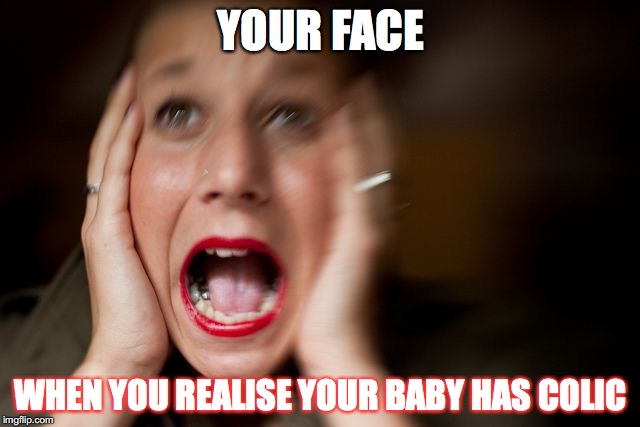Infantile colic, more popularly
known as baby colic, affects up to 40% of all babies. Although baby colic is
generally considered benign, it can create a very tense atmosphere at home for
both the affected babies and parents.

Thankfully, for most babies, anti-colic bottles provide a great and quick solution to the problem.
What is baby colic?
Baby colic is medically defined as
a condition which causes infants to cry inconsolably for more than three hours
daily, at least three days a week, over a continuous period of more than three
weeks.
The condition typically peaks around six weeks after birth, and in most
cases, gradually resolves itself when the baby is aged between three and six
months old. Some babies continue to demonstrate symptoms of colic until the age
of one. However, the numbers are relatively small.
Babies with colic usually cry
because of feelings of discomfort in the stomach and intestine area, as well as,
in rare cases, slight constipation-related pain, which may get exacerbated if
they pass a lot of gas. Aside from crying, babies typically react to the
discomfort by arching their back, pulling up both legs, or clenching their
fists in an attempt to mimic the comfort of the womb.
What is the cause of baby colic?
The exact causes of baby colic
remain a mystery to the medical community. However, researchers believe that it
is caused by one or a combination of the following factors:
• A change in the intestinal or
gastrointestinal microflora caused by consumption of cow-based milk, substitute
dairy products (such a powdered milk or processed cereals) or lactose
• Gastrointestinal imbalances
caused by inflammation or heightened serotonin production (which regulates
bowel functions)
• Poor feeding method which
introduces outside air and air bubbles into the digestive and gastrointestinal
systems
All the factors above share one
common denominator – they affect aspects of the infant digestive system. This
hypothesis is supported by multiple studies which demonstrate high levels of calprotectin
in the faecal samples of babies with colic - calprotectin is a reliable marker
for digestive and colonic inflammation.
It should be pointed out, however,
that organic factors account for less than 5% of infantile colic, which
strongly suggests that feeding, psychosocial, and neurodevelopmental disorders play
a far greater role in the condition.
How dangerous is baby colic?
On its own, baby colic is neither dangerous
nor life threatening, even in worst case scenarios. None of the symptoms can
result to any serious health complications. However, they could make the task
of caring for a baby harder. For instance, babies might resist drinking milk or
suffer from lack of sleep.
Colic, nevertheless, can seriously
affect household members. The constant cries of babies can disturb sleep,
heighten tempers, and cause irritation. Over time, it can be psychologically
draining and lead to chronic fatigue.
The situation can get worse in single
parent households, or when it involves mothers who suffer from postpartum
depression. The threat of self-injury and infant abuse is quite real in extreme
cases. This is why the support of family and friends are crucial for new
parents.
How to treat Baby Colic
Currently, there are no
prescription medications or clinical treatments to treat baby colic. Formula
replacement may help, in cases where babies demonstrate intolerance for certain
brands of milk or milk substitutes. Tapping babies between the shoulder blades
after each feeding can also help clear trapped air.
In addition, when preparing
milk, don’t shake the baby bottle – it will create extra air bubbles. Gripe water and
antigas are also reputed to be helpful in treating baby colic, but there is no
evidence to support the efficacy of such products.
In recent years though, there is
growing evidence that anti-colic bottles can help relieve babies of colic.
Unlike ordinary baby bottles,
anti-colic bottles are designed to reduce the amount of air that babies can
swallow during feeding. Some designs even incorporate internal vents to divert
air away from the nipple when the bottle is upturned.
So the next time you go shopping
for a baby bottle, remember to look out for anti-colic bottles. It could prove
to be crucial in combating colic, as well as creating a happier household.